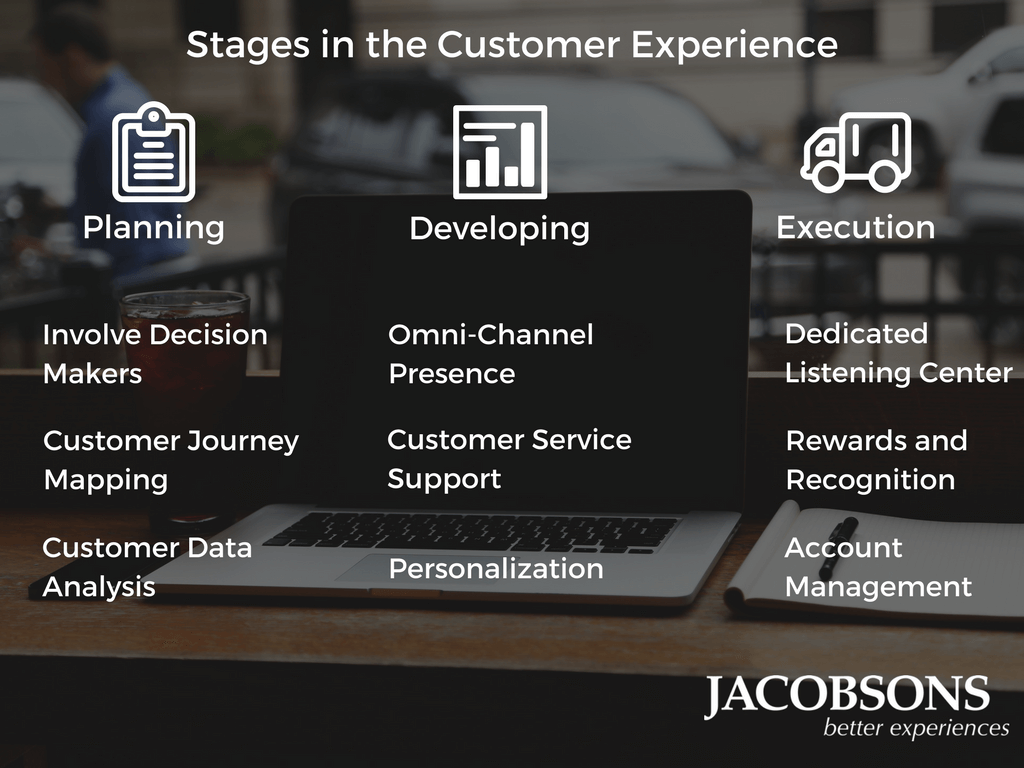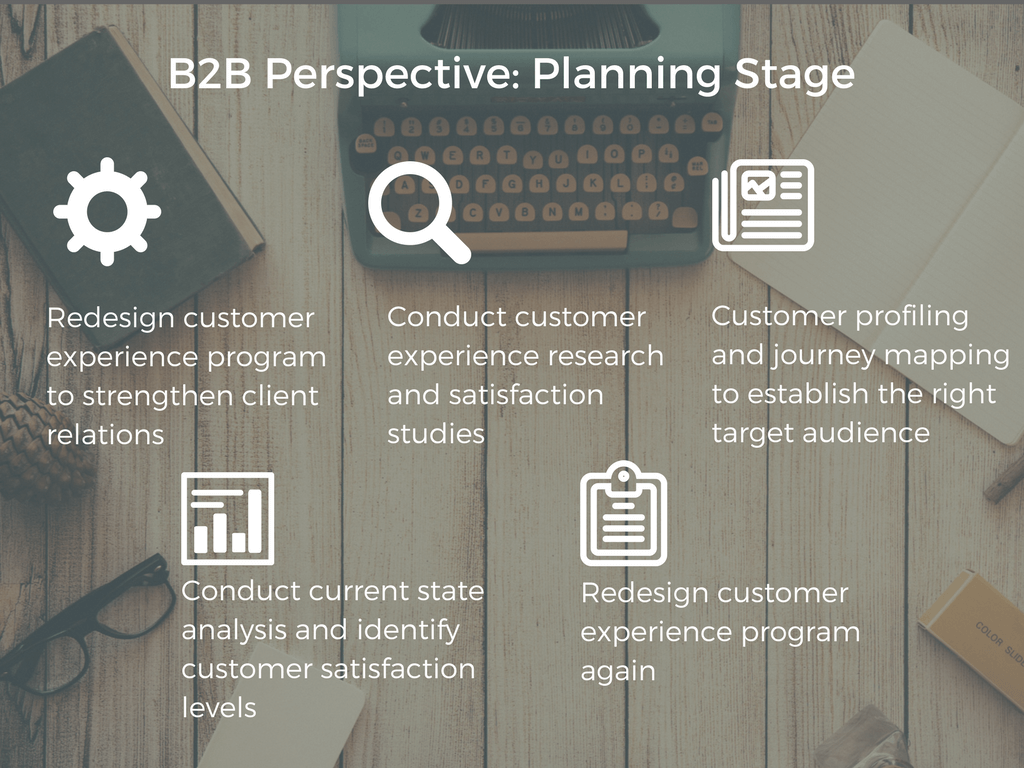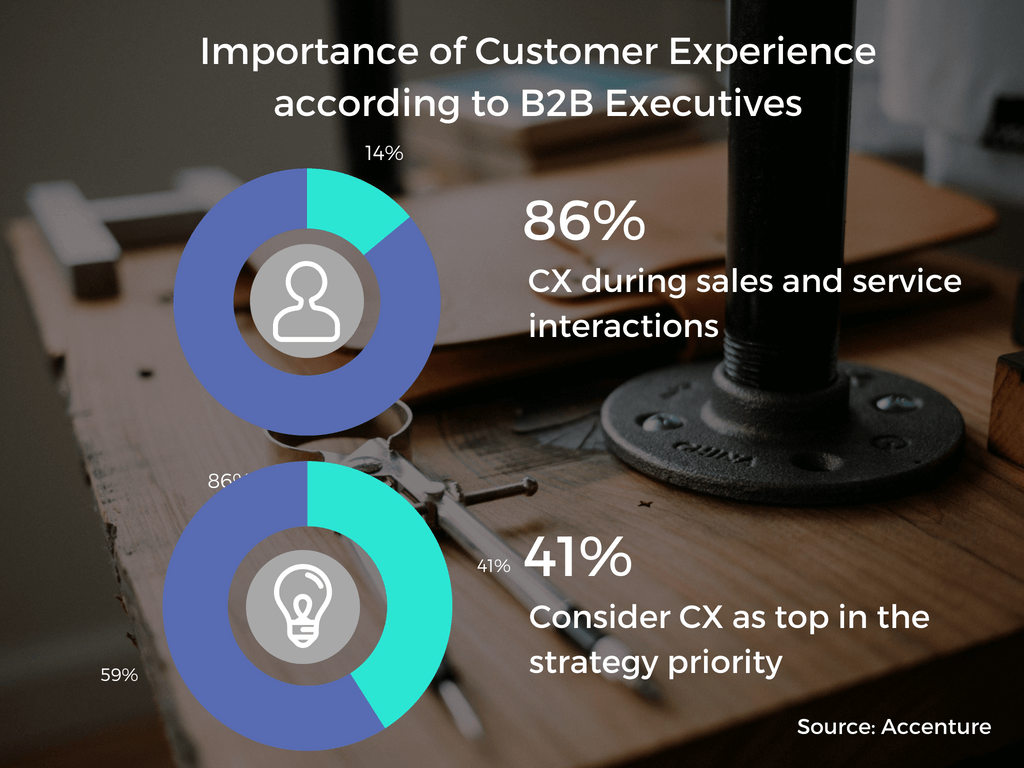
Part 1: 3 Stages of a B2B customer experience program
Stages of a B2B Customer Experience Program
How relevant is a customer experience program in the Business to Business (B2B) scenario?
Having a customer experience program, especially in the B2B world is vital for business growth and sustainability today.
When we hear the term customer experience, we tend to think that it mainly implies to the B2C only and not to B2B.
B2C is perceived to be a more “customer first” world where a positive customer interaction triggers a continuous engagement.
Client relations in B2B was more of a structured procedure rather than a business focus area some decades ago. Today B2B have taken customer experience to a whole new level and are consistently striving to improve business engagement with the clients.
Let’s look at some statistics below to understand the significance of customer experience in the B2B segment.

Survey Details: B2B International Research, B2B International
Survey Question: How customer-centric are B2B organizations? N=266, Survey conducted by B2B International.
B2B International’s research has indicated that only 14% of large B2B companies are truly customer-centric. Where customer experience is a vital part of their culture. The study also revealed that delivering an exceptional customer experience is a differentiator for B2B firms and helps in generating high revenue in return.
Meanwhile, most of the B2B companies are considering customer experience as a core element of their business strategy. It reinforces the fact that delivering exceptional customer experience is a consideration for every B2B business brand as customers are the lifeline of any business.
Now, for businesses to maintain positive client rapport a well-structured customer experience program is essential. It fosters strong emotional connections with their customers leading to increased loyalty.
Stages of the customer experience program
Formulating a robust customer experience program comprises of three stages: – Planning, developing and execution. Across these three stages, there are building blocks that businesses need to implement for delivering productive results.
You can read our next blog on B2B customer experience strategy framing – key building blocks. It provides insights into the building blocks that shape up a successful customer experience strategy.
By traversing through these stages businesses can identify their current levels of customer experience. Thereby tailoring the existing customer experience program for catering to the customer needs better.
It also helps in understanding the perceptions and preference of their target audience. Create compelling content that not only educates but also resonate well with the audience.
Let’s understand the various stages of an efficient customer experience program here.
First, it is the Planning Stage

Planning Stage
The planning stage is where the business must focus on their current state analysis. Identify the performance of the existing business practices and customer experience levels. Redesign the customer experience program based on the target customer’s brand perception and preferences.
By leveraging the building blocks at this stage, brands can achieve this goal seamlessly.
In a B2B scenario, Businesses must ensure that their customer experience program is in sync with the business capabilities. For example, brand promise and product quality.

Recommended Business Initiatives:
Current State analysis, customer experience Research, customer satisfaction & net promoter score surveys, customer journey mapping, and customer data analysis.

Second, It is the Developing Stage
Developing Stage
Developing stage in a B2B set-up is where businesses involve the customer feedback. Delivering the required services at the right time and place is essential. It will help business to travel a notch above in customer satisfaction. It, in turn, delights the customers thereby triggering repeat business.
Recommended Business Initiatives: Real-time customer engagement, infrastructure support like omnichannel marketing and setting up customer care centers.
The building blocks in this stage enable businesses to formulate a robust customer experience program that would allow a drive positive customer interaction.

Third, it is the Execution Stage
Execution Stage
Touching down on the last stage in the B2B customer experience process. This stage majorly concentrates on customer retention. Continuing the customer relations for a come-back purchase and new business engagements with their existing customers.
Execution stage can be considered as a continuing stage and cannot be called as a culminating point. Brands need to constantly rediscover ways of engaging the customers to keep them from switching brands.

Businesses need to ensure that they have a dedicated listening center, a reward, and recognition system and an account management system. It must handle customer queries, build loyalty and trust among the customers.
Incorporating these building blocks would enable businesses to successfully connect and strike a chord with their target audience and drive them across their customer journey.
Recommended Business Initiatives: Customer support centers, account management, reward systems.
Building a robust customer experience program
The success of every customer experience program lies in providing customers with a unique experience. It pushes the brand name to the top of the customer’s minds.
Businesses need to transform into a more customer-centric one. In the world of diminishing product differences. A unique customer experience stands out to be a differentiator.
According to Accenture’s B2B Customer Experience Survey, Few B2B companies excel in delivering exceptional customer experience through their differentiation strategy.
The differentiation lies with the approach of redesigning an existing customer experience. Considering the focus areas such as the Customer service, and the digital infrastructure capabilities.

The report says B2B companies who invest in traditional systems like legacy CRM systems and contact centers are seeing the efforts paying off.
Many of the B2B businesses in the present scenario are consider the digital infrastructure. Online customer care centers and omnichannel marketing channels as potential drivers of customer experience in the digital world.
The Accenture Survey provides few insights on the importance of customer experience according to the B2B executives surveyed. The results indicate.

Customer experience is a net result of a multitude of marketing initiatives. It is spread across different stages of a customer’s journey to drive continuous positive customer interactions.
Thorough understanding of the customer behavior, their pain points, and services gaps enable the business to provide a delightful customer experience and to be more customer focused. Thereby, establishing higher customer loyalty and retention.

